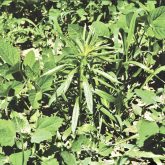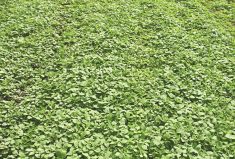An invasive perennial weed from the milkweed family, dog-strangling vine is extremely difficult to con-trol once it gets established (Figure 1). Progress has been made on biological con-trol of this weed in Ontario through the release of Hypena opulenta, a leaf-feeding caterpillar. However, integrated strategies that include both biological and chemical methods are often most effective at reducing large and dense infestations of this weed.
Recently, Dr. François Tardif’s laboratory at the University of Guelph compared the effectiveness of 15 herbicide treatments at controlling dense populations of dog-strangling vine within a York Region woodlot. Below is a summary of observations for the herbicide treatments that are most asked about to control dog-strangling vine.
Read Also

Producers aren’t panicking over tariffs and trade threats
The influence of tariff and trade uncertainity on farm business decisions.
- Arsenal Powerline (3 l/ha): Control was not overly impressive in the weeks following application. A year after application it was the most effective (Figures 3 and 4). Unfortunately, since this product is non-selective, other undesirable weeds, like garlic mustard, started growing the following year.
- Garlon XRT (2.5 l/ha): Offers the quickest and most effective control of top growth. However, with no residual activity, regrowth is evident a year after application (Figure 5).
- Roundup Weathermax (6.6 to 8.3 l/ha): Control was not overly impressive in the weeks following application. A year after application, control is variable and is best described as reducing stand numbers, but regrowth from rhizomes does occur the following year (Figures 6 and 7).





















